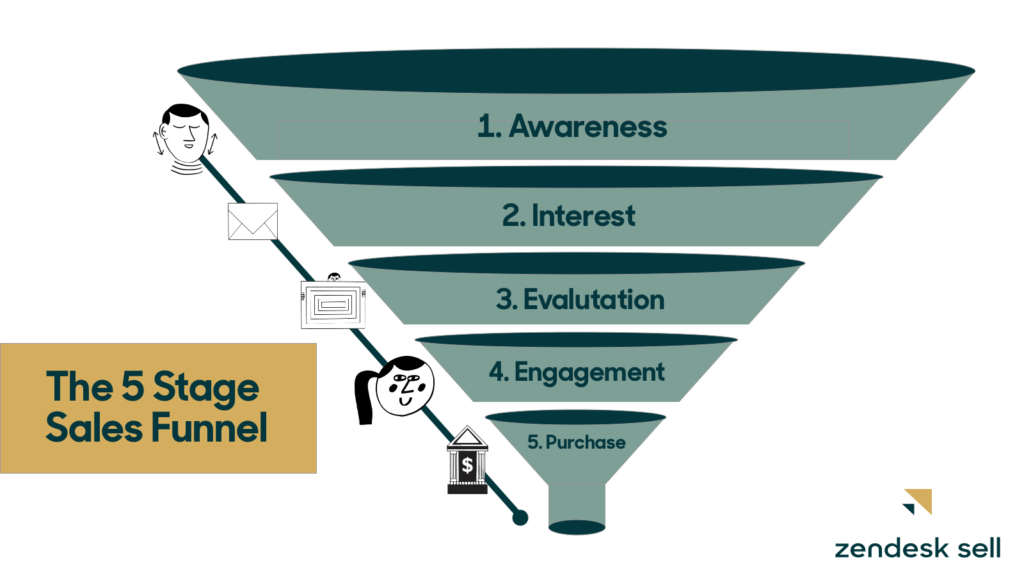Article • 6 min read
Startup Central — Telling the customer journey story with data
All businesses to map their customer journey, even startups. Find out how data tools can help you connect the dots and tell a compelling story about your customers.
Par Sammi Chen, Startup Marketing Associate
Dernière mise à jour June 24, 2021
A lot has changed recently, including customer behavior. To understand the ever-evolving customer journey, startups need data. The good news is that with the right tools and a little bit of scrappy startup energy, data analysis can be both cost-effective and scalable for startups.
To help guide this process, the Zendesk for Startups team chatted with Anand Deshpande, Head of the Startup Program at Segment, and Niels Fogt, Senior Director of Growth at Tray.io about how startups can harness data to better understand the story behind their customer journey.
Here’s a recap of what they covered, and if you like what you learn, be sure to join us on Slack for more insights and inspiration.
Key learnings
- Bureaucracy kills innovation. The great thing about being a startup or a small company is that process is flexible.
- Quantify success. Choose the right metrics to guide and align your strategy.
- Data is for everyone. Instill a measurement culture at your company and make it available to everybody.
- Bigger is not better. There’s a lot of tools for free out there. You can resource like a small company but act like a big one.
- Empower your team. Put technical skills and knowledge in the hands of people on the frontlines of your business.
Telling stories with data
Understanding what your customers are doing is a matter of connecting the dots. Each customer journey has a story to tell and creating a tracking plan can help startups illuminate different chapters.
“At the base of it, it’s all storytelling,” says Anand. “If you’re looking at what your metrics are supposed to be showing you, and what your tracking plan is supposed to be used for, it’s to help you understand the story of your customers.”
Understanding the parts of the story is key to understanding the full picture.
“It’s not just data and analytical things, but it’s also this more squishy, qualitative journey that we’re trying to understand.”
Anand Deshpande, Head of Startup Program, Segment
“It can be from a business standpoint, from understanding your customer to understanding who’s gonna be your best user and what’s happening right before someone pays you or upgrades a subscription,” explains Anand.
“Those are all just the parts of this customer journey,” says Anand. “If you take it and boil it down to its base common denominator, that’s really what a tracking plan is.”
“While this all may sound complex to someone without a technical background, it helps to think about it from a storytelling perspective, it’s not just data and analytical things, but it’s also this more squishy, qualitative journey that we’re trying to understand,” says Anand. “And putting that all together is the end result.
Why every business needs a customer journey map 🗺️
Niels emphasizes the importance of getting into the discipline of tracking early on — and keeping it simple.
“You don’t have to overcomplicate things to start,” he says. And by making it important early on, it becomes a “skillset that permeates the culture.”
“Having certain skill sets helps you have positive accidental discoveries and certain disciplines should be learned broadly across organizations, says Niels.
“Blurring the lines of technical disciplines and the business side becomes more important as data becomes cheaper and tools are adopted more broadly.”
Setting up your funnel
There’s no one size fits all when it comes to customer journeys. Understanding data will help your teams define customized funnels.
Niels explains that Tray.io had a lot of inbound marketing but it realized that there was a step missing between inbound traffic and sales. It took heavy lead qualification and teams understanding pain points of individual leads. It had to pivot from a self-service funnel to an enterprise model.

“Once we did that was when our growth really started to happen and that’s really fed the business up to this point,” says Niels.
Meanwhile, Segment has been harnessing data to better classify leads and tailor their outreach.
When a visitor is on Segment’s site, they look at that lead and enhance it with Clearbit data and do a MadKudu lead score. Based on the score, they can interact with that lead differently, according to Anand.
“We might open up a live chat window, we might offer them direct contact with a salesperson, or we might send them other information that’s self-serve content,” says Anand. “The leads will then be adjusted based on how they fare through the funnel.”
How to consistently close deals in a changing world 💰
The importance of key metrics
Understanding growth Key Performance Indicators will allow you to save time, iterate often, and find Product Market Fit (PMF) faster. And this, says Anand, is arguably the most important metric in early-stage startups.
Niels is an advocate for what’s called pirate metrics. “They call them pirate metrics because of AARRR,” says Niels, mimicking a pirate and explaining that the acronym stands for Acquisition, Activation, Retention, Referral, and Revenue.
Pirate metrics ☠️
The AARRR framework, also known as pirate metrics, is an acronym representing five key metrics a startup should focus on:
- Acquisition
Customer acquisition refers to how new prospects enter your funnel - Activation
Successful activation means customers see why your product is valuable - Retention
Customer retention refers to your ability to keep customers coming back - Referral
Referrals happen when happy customers recommend your product to others - Revenue
Revenue refers to how much money you’re making from product sales
Anand emphasizes that understanding not just general metrics, but your growth KPI and what it is you’re aiming for. For example, Airbnb is focused on yearly bookings while Facebook is focused on monthly active users.
Once your startup finds its core growth KPIs, you can then use them as a basis for all tests and experiments.
Open platforms make for better tools
One of the most interesting things about modern tech platforms is that the majority of them are open which means teams can integrate a range of tools and customize workflows depending on their products and customers.
“We are very much in the day and age where the best of breed products can be chosen because of tools like Segment, Tray.io, and Zendesk,” says Niels.
“And part of your decision in choosing these tools is because they have strong APIs, and strong webhooks that allow them to be integrated with other best of breed tools,” explains Niels.
Not sure which integrations you need? Here are a few popular apps for startups.
We’ll see you on Slack
Data is a big challenge for startups (and all companies, really), but it’s easier with the right tools and trusted partners who can help. That’s where the Zendesk for Startups team comes in.
Eligible startups can get six months of Zendesk for free, and our network of startup experts is here to support you. We have a Slack community of over 700 startup leaders and CX professionals who can guide and motivate you as you dive deeper into CX.
